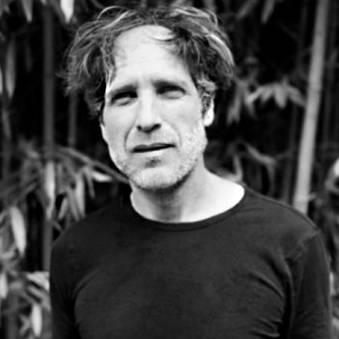Toma Gouband: A Journey Through Stone, Sound, and Rhythm
The Birth of a Sonic Explorer
Born in 1976 in Manosque, a picturesque region in southern France , Toma Gouband’s rhythmic journey began at the age of five . He recalls a pivotal moment when he fashioned a drum set from kitchen utensils and pots, improvising rhythms that resonated across the valley where he lived 1. This early immersion in sound and rhythm sparked a lifelong exploration, with Gouband noting, “It felt like a kind of magic moment… a deep feeling that there was an obvious meaning in doing that, playing music could make me observe and feel the landscape differently, a mysterious and interesting path to follow.”
Educational Foundations and Transformative Experiences
Gouband’s formal musical training included studies with Christian Salut at the Conservatoire National de Région in Toulouse and Jean-Marc Lajudie in Limoges . He furthered his musical development at the Banff Centre in Calgary under Dave Douglas and in New York with Tom Rainey 2. These experiences honed his technical skills and broadened his understanding of improvisation and composition. A significant turning point occurred in 2006 during a visit to a Baka Pygmy village in Cameroon. Witnessing their intuitive and communal approach to music profoundly impacted Gouband, inspiring him to reconsider his relationship with percussion 2.
The Stone Whisperer: Mastering the Lithophone
Upon his return to Europe, Gouband embarked on an extensive exploration of the lithophone, an ancient instrument crafted from resonant stones 3. The term lithophone, derived from the Greek words ‘lithos’ (stone) and ‘phone’ (voice or sound) 3, refers to an instrument that produces music through the vibration of carefully selected stones 3. Gouband’s approach is both respectful of tradition and boldly innovative. He meticulously selects stones for their unique sonic qualities, creating instruments that connect ancient practices with contemporary sound exploration 1. His innovation extends to “vegetal lithophones,” where he integrates plants and other natural elements alongside stones, further expanding his sonic palette and reflecting his deep connection to the natural world 7.
The Mathematics of Rhythm
Gouband’s artistic practice is also deeply informed by his fascination with numbers, proportions, and polyrhythms 1. His research into the mathematical underpinnings of rhythm has led him to observe the ubiquitous presence of polyrhythms in the universe, from biological processes to celestial mechanics 1. This profound understanding of rhythmic structures allows him to create compositions that are both intellectually engaging and emotionally resonant. Since 2021, he has been working on a comprehensive book about polyrhythms during a residency at La Pommerie in France, slated for publication by IRCAM editions.
Creative Partnerships and Collaborations
Throughout his career, Gouband has cultivated meaningful musical partnerships with artists who share his exploratory spirit. His long-standing collaboration with Harmen Fraanje and Brice Soniano in the trio “Out of the Wild” has resulted in acclaimed recordings on the Astropi label, including “Schades Of Blue” (2015) 8 and “Nyamaropa” (2016) 8. Other notable collaborations include work with Evan Parker and Mark Nauseef on “As The Wind” 8, Benoît Delbecq and Nelson Veras on “1>0” (2016) 9, Ruben Machtelinckx, Frederik Leroux, and Frederik Rasten on “Porous Structures II” 10, and Marta Warelis and Sakina Abdou on “Hammer, Roll and Leaf” 10. These collaborations highlight Gouband’s versatility and his ability to contribute his unique voice to diverse musical contexts.
The Ritual of Performance
Gouband’s performances often transcend conventional musical presentations, embodying a sense of ritual and ceremony. Since 2008, he has focused on solo performances featuring his mastery of lithophones and branches, creating immersive sonic experiences deeply connected to their environment 11. Critics have lauded his work as “a complex layering of sounds that feel both ancient and forward-looking.” Stewart Lee aptly described Gouband’s approach, noting his ability to work with the “patterns the resonant replies of the sacred space suggest, tracing air shapes with the clunk of stone on stone.”
Beyond Performance: Installation and Education
Gouband’s artistic vision extends beyond traditional performance into the realm of sound installation. His notable creation, “Ondulo,” features 400 suspended terracotta bells activated by natural elements like air and water currents, showcasing his fascination with the interplay between sound, movement, and nature 11. He also regularly conducts workshops centered on experimentation and deep listening, encouraging participants to explore the sonic potential of materials found within their own landscapes. His teaching emphasizes a generative approach to composition, empowering individuals to discover and express their unique musical language 11.



